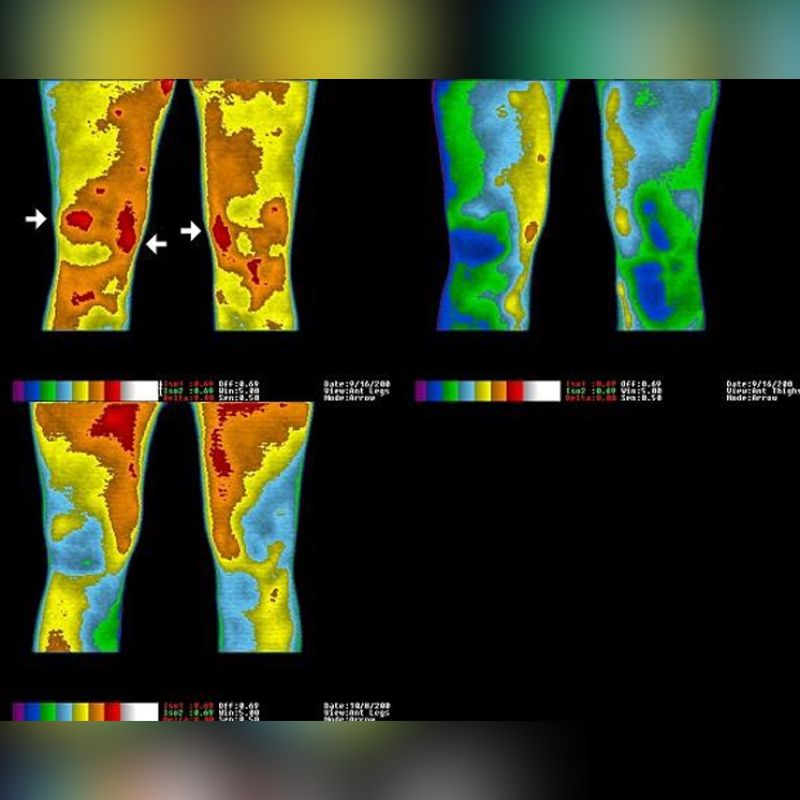
Case Study No. 5
In today's article, we will look at a case study of a 48-year-old woman who experienced significant health improvements by practicing earthing.
Let's see how grounding affected this patient's health.
The patient was included in a randomized, controlled clinical trial that used electron transfer technology (ETT), or simply grounding.
The case presented below is from a randomized, controlled clinical trial. The patient was exposed to clinical electron transfer technology (earthing) and observed for changes 30 minutes later and then followed at clinical visits for 12 weeks. Progress was monitored using high-resolution infrared medical imaging and standard clinical outcome measures (quadruple visual analog pain scale). The patient in this study was presented as a completely disabled 48-year-old woman with significant chronic bilateral knee pain (worse on the right side), knee swelling, and fatigue for the past 6 years. The patient's condition began as a result of an injury sustained while using a ladder. The patient had undergone 3 knee surgeries, extensive medical treatment, and physical therapy with no results. The patient presented with knee braces, a pronounced limp, and the need for a walker for ambulation.
After 30 minutes of clinical grounding, the patient reported a 20% reduction in pain that lasted for 24 hours. After 5 days of clinical grounding, the patient reported a 30% reduction in pain along with an increase in energy that she described as “almost getting back to my normal self.” After 2 weeks of treatment, the patient felt well enough to try dancing and reported no worsening of symptoms. After 3 weeks, the patient no longer required a walker. After 6 weeks of treatment, the patient’s limp was gone.
At week 12, the patient reported an overall reduction in pain and swelling of 90% and noted that "I can't believe I have my life back." Her infrared images show a significant change with marked improvement in inflammation in both knees. The images are consistent with the patient's statement that her symptoms are worse on the right side.
